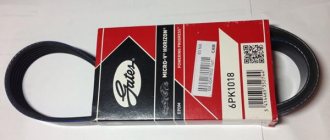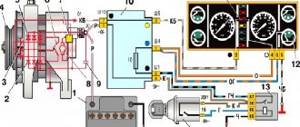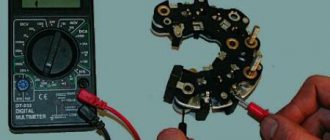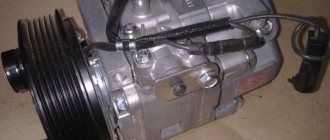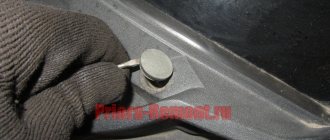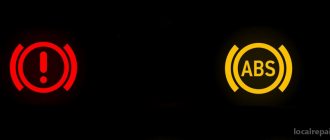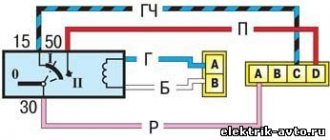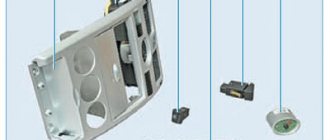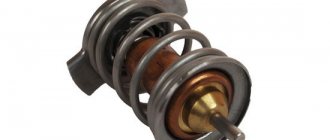Natural wear and tear
As you know, this element is subject to heavy loads. Therefore, it must be durable and at the same time elastic. The generator belt is made of rubber with a reinforcing filler. The service life of this product is 60 thousand kilometers. Of course, the resource directly depends on the load on the generator. But if there is a whistle from the engine compartment, it is worth remembering how long you have not changed this element. Remember that over time the belt loses its quality.
Cleanliness of parts
Few people know that the engine compartment also needs to be washed periodically. Moreover, this is not done for aesthetic pleasure. The fact is that when heavily soiled, the belt drive loses grip with the pulley. A characteristic whistle begins. In addition, dust particles act as an abrasive inside. As a result, the question arises: “Why is the new alternator belt whistling?” But it’s not just dust that can contribute to this problem.
Why does the alternator belt whistle?
What are the causes of a whistling alternator belt? Typically, the whistling starts when the engine is cold or in wet weather - when the engine has just been started and other energy consumers have also turned on. It also starts whistling when you press the gas pedal - and after a while the unpleasant sound disappears.
In the cold
The main reason is moisture ingress. Fortunately, this problem is easy to fix. The belt drive is not protected by casings - in the absence of protection for the engine crankcase, water from puddles gets on it. The whistle may appear even after the power unit has warmed up, but in this case it will soon disappear.
The appearance of a whistle can be explained by insufficient tension of the belt drive or a violation of its structure. In addition, working fluid may get on the consumable, and this can lead to more serious consequences - it may simply fly off. Contact with synthetic ATF oil is especially dangerous. The ingress of conventional motor oil leads to stretching of the consumable and, as a result, to the appearance of unpleasant sounds.
Check the tension rollers, as over time they begin to jam. The belt may not move parallel to the pulley, resulting in friction with the rollers. The unpleasant sound will be heard constantly. This will lead to severe wear on the belt drive and may cause it to break. Urgently take the car to the service station!
The freewheel may become stuck. It is usually attached to the generator armature; its purpose is to reduce the load on the belt. The power unit functions unevenly - there are moments of “splash” when the fuel burns out in the cylinders, and moments of attenuation when gas begins to be removed. This negatively affects the belt if the crankshaft and the generator armature are in a rigid connection. So the alternator belt whistles on cars with clutches - this happens almost all the time.
The pulleys of the pumps, crankshaft and generator gradually wear out. For example, if a small pulley on a generator wears out and a large pulley on the crankshaft wears out, this will put excessive stress on the small element. Typically, pulleys are made of aluminum, which is by no means a hard material. The teeth wear out quickly and it starts to whistle. The track on the pulley itself can also be damaged - for example, crumpled after an impact. Pebbles or dirt get into the pulleys. This can easily be avoided by simply cleaning them from below with a brush. The whistle may disappear, or it may remain if the pebbles have managed to damage the surface of the teeth.
Stretching a belt drive is a natural process. To correct the situation, just tighten the connection. You shouldn't do too much lifting - a few centimeters are enough. But if the belt has cracks, chips or other signs of obvious wear, it must be replaced.
Let us summarize the reasons for the appearance of unpleasant sounds:
- ingress of moisture or working fluids;
- jamming of the tensioner or overrunning clutch;
- pulley damage;
- pollution;
- problems with tension;
- drive wear or installation of low-quality consumables.
After replacement
If the new alternator belt squeals, the problem may be that the pulley groove is dirty with grease. The lubricant will inevitably fall on the belt, which will lead to a sliding effect. The belt drive will not be able to adhere properly to the surface, resulting in an unpleasant sound.
When installing the gear, it must be tightened firmly. A poorly tensioned drive will certainly make noise during acceleration. Perhaps you changed the pulleys and aligned them incorrectly - but they must be located on the same line, since even a slight deviation leads to the appearance of extraneous noise. Sounds also occur when the bearing wears out. Therefore, when changing the drive, be sure to look at the condition of this part.
The belt drive should not be too rigid - otherwise it will not be able to transmit sufficient rotation. A rigid belt manifests itself at low temperatures, because frost causes it to harden and shrink even more. But in this case, unpleasant sounds are heard only until the engine warms up.
Tension
This is perhaps one of the most common reasons why the alternator belt whistles on the VAZ-2110 and other domestically produced cars. Owners of foreign cars are not immune from this problem. Whistling can occur for two reasons. This is a very weak or too tight belt tension. Moreover, the problem may disappear and appear again. So, if the belt is tightly tightened, the whistle will occur only in the cold season. As soon as the engine warms up, the belt regains its shape and the sound stops. But this does not mean that you can continue to drive with such a problem. This significantly reduces the life of the belt and bearing.
Five main reasons why a generator whistles
Below is a list of the most common causes of alternator belt whistling:
- Cleanliness of car parts is an important rule that the owner of the vehicle must observe. Oil that accidentally gets on the belt or shaft causes an unpleasant squeak. This happens due to the fact that the belt loses its former adhesion to the surface of the shaft and slips.
The provisions listed above are the main ones. But this does not mean that there cannot be other reasons. The most important thing is to respond to the problem in a timely manner and take immediate measures to eliminate it, then you will forget how the generator belt whistles.
Generator characteristics
Lada of the latest generation
The standard installation requires the presence of model 5102.3771, which is produced in Russia, which has a built-in rectifier unit and an electronic regulator for voltage during right rotation (on the drive side). The advantage of a generator of this brand is that it provides increased current output at low speeds (4-6 A when reduced to 300 rpm), which is a positive quality for traveling by car in winter. In addition, this feature of operation allows it to be equipped with an automatic transmission.
The technical characteristics of the generator 5102.3771 are as follows:
- weight - 5.41 kg;
- the gear ratio of the engine and generator on the Priora is 1 to 2.4;
- specific power - 205 W/kg;
- the maximum current output at 14 V is 80 A;
- adjustable voltage - from 13.8 to 14.4 V.
Problems with an autogenerator and solutions
The Priora generator does not have many disadvantages, but nevertheless it is worth knowing the main types of its breakdowns, their causes and solutions. If, when you turn on the ignition, the signal lamp does not work and the control devices do not show “signs of life,” then you need to check the fuse in the mounting block and the ignition switch itself. In addition, you need to pay attention to the absence of breaks in the power circuits laid to the devices. Here you need to check the orange wire and its connection from the control devices to the mounting block.
When the generator warning light does not light up both when the engine is running and when the ignition is turned on, the battery is discharged, the control panel does not work, then the reason may be in the devices, damage to the voltage regulator, wear (freezing) of the brushes, or oxidation of the contacts (on the rings). A break may also occur between the devices and the output from the generator or the leads from the excitation winding may be unsoldered from the contact rings. Here, most often you have to replace worn-out elements with new ones. You need to do the same if the warning light lights up when the engine is running, but the battery is being recharged. This means that the voltage regulator is damaged, which also needs to be replaced.
You will have to work on the car and buy new parts if the generator warning light lights up brightly (or at full intensity) when the engine is running with a discharged battery. This means that either the voltage regulator is damaged, or the valves from the rectifier unit are broken, or the diodes from the power supply on the excitation winding are damaged. It is worth paying attention to the connection of the excitation winding leads at the points of attachment to the rings, and check for breaks in the stator winding (short to ground).
Howling and whistling in the generator
This is a generator belt for Priora
The Priora generator may be too noisy if there is a short circuit in the valve (the rectifier unit needs to be replaced), or the bearings from the generator are damaged. Noise can also be caused by an interturn short circuit or problems associated with the stator winding shorting to ground. In this case, you can hear sounds similar to howling. And this is fraught with replacing the stator. But most often, drivers begin to worry when they hear the alternator belt whistling, because this means that there is no charge, the battery is low, and the car may get stuck somewhere far from the service station.
Replacing the alternator belt is not a big problem for most representatives of the stronger sex. However, Priora has a number of features that complicate this simple operation. And this is due to the fact that the car in the basic configuration can be equipped with power steering or air conditioning, which gives a larger belt size, as well as its different location.
Such design features cause the power steering pulley to be low, so the alternator belt runs around the supports of the machine’s power unit. This means that the replacement will have to be done using a powerful jack (bottle type) or in a service station. To replace the alternator belt on a Priora car with air conditioning, you need to take keys “17” and “13” (2 pcs.), heads “17” and “10”, a lever, WD40, a key for tensioning the alternator belt on a Priora .
Let's start work. Main stages:
- wet the mounting bolts on the engine mount and bracket with WD40;
- after a quarter of an hour, unscrew the bracket nut, lift the right front wheel (with a jack), place a lining under the engine, remove the wheel;
- lower the car slightly, unscrew the tension roller, bend the alternator belt, unscrew the bolts securing the cushion;
- we release the car so that the engine begins to “hang out”, move the cushion towards the engine, remove the belt and install a new one;
- We jack up the Priora to lower the engine (we control the position of the alternator belt and airbag);
- We tighten the cushion bolts and the bracket nut, put the wheel back on, and lower the car to the ground.
How to eliminate a whistling alternator belt?
Having identified the cause of the problem, begin to eliminate it. If there is mechanical damage to the transmission (chips, cracks), it will have to be replaced. Select consumables that are suitable for a specific car brand.
If the consumable is contaminated with working fluids, you can limit yourself to cleaning the unit, then install it in its original place. Don’t forget about the tension level of the gear - if it is not enough, you need to tighten it. If the pulleys are misaligned, they must be adjusted. And if it is determined that the bearing is to blame, the solution is to replace the element. The problem of a jammed tensioner or overrunning clutch can only be solved by repair at a service station.
In winter, the belt drive tightens, which also leads to the appearance of extraneous noise. There is no need to be afraid of this - after some time after starting the engine, the unpleasant sound will disappear. As part of prevention, it is worth applying special additives to the surface of the assembly.
How to tighten the alternator belt? What to do about tensioner problems?
Replacing the alternator belt may not always be necessary; almost every driver has tightened this device at least once in his life to eliminate whistling and improve vehicle performance. Manufacturers recommend carrying out this procedure after every 15,000 kilometers using a ring wrench set to “19” and a special two-arm roller for the wrench.
The order of operations is as follows:
- when holding the cage from the tensioner pulley using a tension wrench, you need to loosen its nut;
- slightly rotating the tension wrench, rotate the tensioner roller cage, increasing the belt tension;
- squeeze the nut at the roller.
Usually, replacing the generator belt is carried out together with replacing the roller, but the results are not always positive if attention is not paid to the entire tensioner system, which, in addition to the roller component (with bearing), includes the roller bolt and attachment to the engine using a bracket. The “weak link” in this structure is the bearing, which wears out its life and can cause play. In addition, over time of operation or due to factory defects, the bracket may bend, which causes premature wear of the belt or its displacement.
Ribbed alternator belt
Another popular operation is to check the voltage regulator. This element continuously and automatically changes the excitation current on the generator so that the voltage does not leave the required limits when the load currents and generator rotation speed change. In this case, the car enthusiast will need a tester. You need to unscrew the rubber cover, connect the “plus” of the battery, the “minus” to the “minus”. Then you need to start the car and turn on the headlights. After 15 minutes, at medium engine speeds, you need to measure the voltage, which should be no more than 13.8 but no less than 14.4 V. If there are deviations, you need to check the voltage on the stud in comparison with ground. If it is normal on the pin, then you need to check the voltage values at the power terminal (you may need to clean the contacts). After prevention, the difference between “pin” and “mass” should become zero.
Alternator belt whistles in the rain
Fog, high humidity, rain are ideal conditions for the V-belt drive to whistle. For obvious reasons, moisture gets on the surface of the belt and reduces the frictional ability of the material, as well as on the pulleys. Wet whistles are short-lived, but you shouldn’t relax. This means that the belt has already begun to lose elasticity and should be tightened if wear allows.
In wet weather, the frictional abilities of the alternator belt material are reduced
In any case, belt slipping indicates a malfunction in the belt drive, and rain or splashes are simply an indicator that the belt may need to be replaced soon. To avoid such problems, let the small, cunning Americans from the Hi-Gear company come up with a remedy that can temporarily save you from whistling. Let's say a few words about him.
How to remove the generator?
In some cases, to resolve problems, you will need to remove the generator. To do this you need a 13mm socket wrench. You should start by disconnecting the negative terminal from the battery. Next, you will need to remove the belt from the generator drive, release the wire from the terminal (D+), remove the rubber boot, unscrew the nut and disconnect the wire from the terminal pin.
Then the nut is unscrewed from the bottom mounting bolt between the bracket and the generator, which is removed along with the spacer sleeve. Next, the bolt is removed (from the lower mount), the nut from the mount to the upper bracket is completely unscrewed, and the part is removed from the car.
You can remove the generator and install a new one in a few minutes, but in stores it is not always possible to quickly find the required spare part with the required code.
- Posts: 518
- From: Kostroma
- Lada Priora Lada Priora Hatchback Lux
July 16, 2009, 6:17 pm #1 123
Guys! Give me a tattoo, what the hell? I start my hatchback, it’s hot, I turn on the air conditioner, turn on first, press the accelerator (gas) pedal, and off I go. And then, as soon as I stepped on the gas, there was a whistle coming from under the hood, I was in a panic! I give it more gas, the whistle disappears, everything seems to be fine, silence (well, the rear shelf is rattling) I’m driving. What could this be? Maybe a Conder? Or timing belt? The main thing is as soon as I get under way this shit starts. Can we try without the condenser? Tell! Yes guys, who knows what kind of vertical mounting sensor there is? It is located on the casing (16 valve), top left. A thin black boat, and from it 2 hoses go, tied with a clamp. Damn constantly flies out of its regular place and dangles! I steamed these joints, and then the first one is in a week! ATP in advance!
July 16, 2009, 18:20 #2 123
My alternator belt tensioner was squealing.
- Posts: 250
- From: Samara
- Ford Focus 3 hatchback
July 16, 2009, 21:19 #3 123
Just a piece of advice - don’t twist or touch anything yourself, especially in a week, you can express your complaints there, otherwise they’ll remove the warranty and that’s it. Maybe with such a load on the engine, when the air conditioner is still moving, some kind of bearing or the belt is still humming, only an autopsy will tell, you won’t understand.
- Posts: 492
- Audi A4 Lada Priora
July 16, 2009, 21:35 #4 123
So the Priora started talking to the Conder
July 16, 2009, 10:36 pm #5 123
I'm telling you it's not about the conduit.
- Posts: 518
- From: Kostroma
- Lada Priora Lada Priora Hatchback Lux
